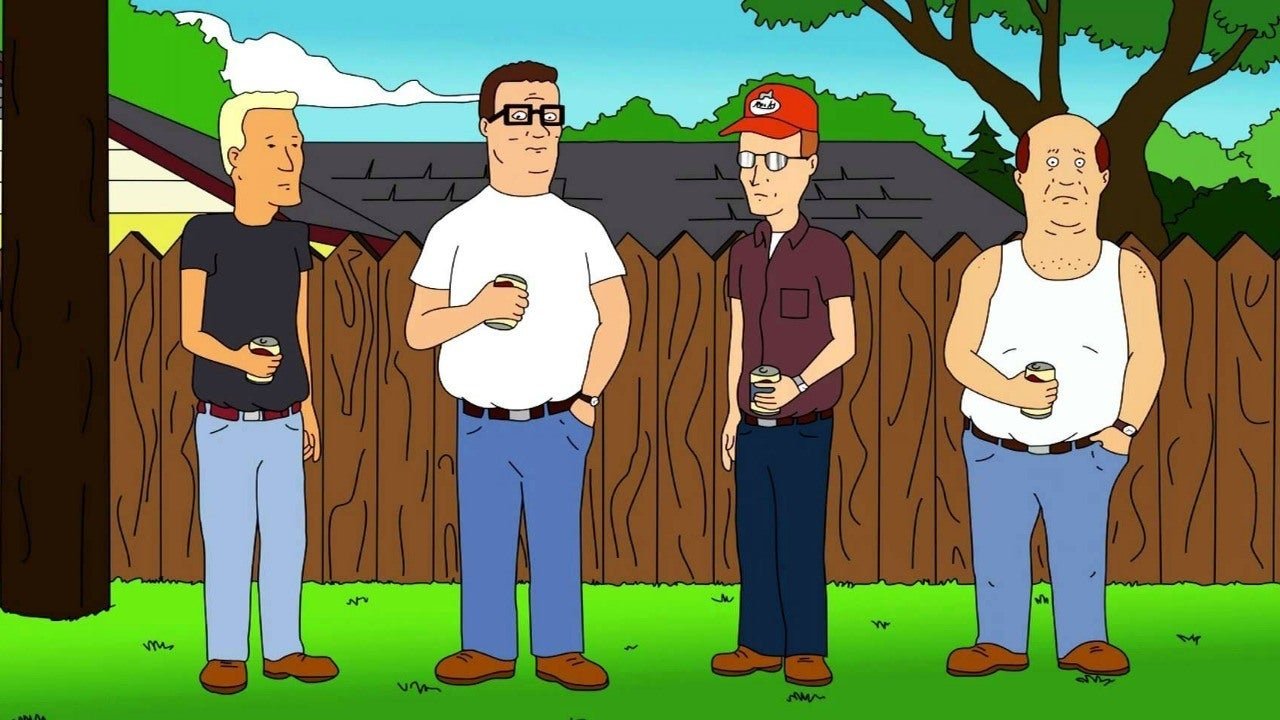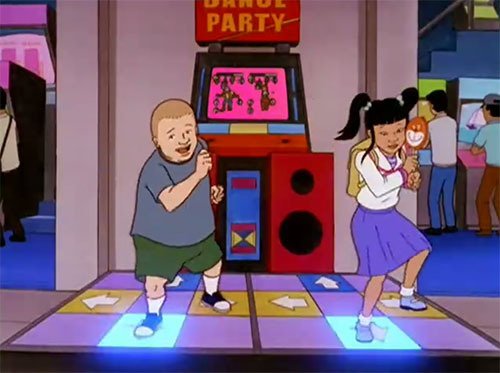They Make Anime in Texas?
Since its premiere in 1997,
the animated television series King of the Hill has become a beloved American classic. Created by Mike Judge and Greg Daniels, the show is known for its humor, wit, and its portrayal of the lives of the fictional Hill family in Arlen, Texas. However, almost 30 years after its release, an interesting comparison can be made with animated series and styles from the East. Upon a deeper look at the show, there is a depth that can be appreciated that resembles the same kind of spirit a Anime series might offer.
An odd Japanese dub of a King of the Hill scene.
The Making of King of the Hill
King of the Hill was co-created by Mike Judge, known for his work on Beavis and Butt-Head, and Greg Daniels, a former writer for The Simpsons. The show's animation style is relatively simple and grounded, with a focus on storytelling and character development over flashy visuals. This style lends itself well to the show's realistic portrayal of everyday life in suburban Texas.
King of the Hill was produced by 20th Television and Film Roman, with the animation being done primarily by Rough Draft Studios. Rough Draft Studios is an American animation production studio, however the studio has a sister studio, Rough Draft Korea, located in Seoul, South Korea.
It was in fact Rough Draft Korea that handled the animation process of the first 30 episodes of King of the Hill. King of the Hill, like its predicessor, Beavis and Butthead, has a unique animation style. In strong contrast to many other american styles of animation that are often ‘cartoony’ with big swooping animations and exaggeratd movements, like Walt Disney, Beavis and Butthead and as an extension, King of the Hill are strikingly different.
Social Reception and Message
Upon its release, King of the Hill received critical acclaim for its unique take on the animated sitcom format. Its portrayal of middle-class America resonated with audiences, and the show remained popular throughout its 13-season run. The series is well-regarded for its thoughtful exploration of themes like family, friendship, and American values, often presenting challenging situations with nuance and empathy.
Anime Tropes in King of the Hill
While King of the Hill might not be a traditional anime, there are several tropes and stylistic elements that the show shares with its Japanese counterparts.
Strong character development: Like many anime series, King of the Hill focuses on the growth and evolution of its characters. The relationships between the Hills and their friends and neighbors are at the core of the show, and the series consistently delves into their backstories and motivations.
Slice-of-Life storytelling: One of the most interesting aspects of King of the Hill is its slow pacing and departure from the over saturated action of a lot of other cartoons. It’s storylines as well, often revolve around the daily lives of the characters, mirroring the slice-of-life genre in anime. From Hank's love and respect for propane, to Bobby's quest to find his place in the world, the show excels at depicting relatable, human experiences, often in the form of the mundane.
Moral lessons: Many anime series are known for conveying moral lessons or exploring philosophical themes, and King of the Hill is no exception. The show frequently addresses issues such as responsibility, integrity, and the importance of community, ultimately imparting valuable life lessons to its viewers.
A sense of place: Just as many anime series are deeply rooted in Japanese culture and settings, King of the Hill is proudly shows its Texan world. The show's creators capture the essence of small town Texas, from its regional dialects to the local customs and values, it creates a vivid and authentic world for its characters and as an extension for us.
Ensemble cast: Both anime and King of the Hill often feature a diverse and well-developed ensemble cast. In King of the Hill, characters like Dale Gribble, Bill Dauterive, and Boomhauer, each with their unique quirks and personalities, contribute to the overall narrative and dynamics of the show, much like the ensemble casts in many anime series.
Emotional depth: A key aspect of anime is its ability to evoke strong emotions in its viewers. King of the Hill achieves this through its compelling storytelling and character-driven plots. Episodes like "Bobby Goes Nuts" and "Peggy's Fan Fair" reveal the vulnerabilities of the characters and elicit empathy from the audience, a trait shared with many anime series.
Although King of the Hill may not fit the traditional definition of anime, its similarities to the genre are undeniable. From its strong character development and slice-of-life storytelling to its moral lessons and emotional depth, the show shares many of the qualities that have made anime such a beloved art form.
By conisdering King of the Hill as ‘Texas Anime’, it can almost reveal a deeper appreciation for the show. Certain details like the slice-of-life style, and a sense of place can reveal deeper experiences and ideas. King of the Hill definitely was a departure from other popular anime styles like The Simpsons, and Family Guy. King of the Hill definitely is very Texas and middle American in its cultural offering. But when we see it as a series that transecnds cultural boundaries, we can re-discover something that has universal truth. Also, while the show is set in a time period now gone, it stands the test of time, much like the best anime has done for decades.
Bobby Hill tries DDR in Japan










